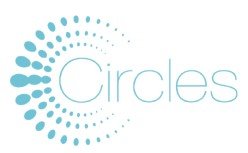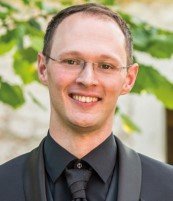HARNESSING THE POTENTIAL
OF MICROBIOMES:
BEFORE WE CAN RUN, WE NEED
TO LEARN HOW TO WALK!*
MICROBIOME

Microorganisms are organisms that can only be observed with a microscope, and include for example bacteria, protozoa, algae, fungi, and viruses. They are everywhere to be found: in the environment, on plant leaves and roots, in and on our body. Hence, they are important from local scales, e.g., causing a localised infection on the skin or contributing to the nutrient uptake of plant roots, to global scales, e.g., in geochemical carbon cycling. Due to their small size and the large number of cells, they are challenging to study. When we know which microorganisms are there, what they can do and how they interact under different conditions, we enhance our understanding of the impact microorganisms can have. The insights we can get ultimately help to improve our food systems.
Within the EU-funded project CIRCLES (1) that I’m part of as a researcher at the Luxembourg Centre for Systems Biomedicine – University of Luxembourg, we study collections of microorganisms – so called “microbiomes”. We look at several food chains: spinach, tomatoes, poultry and swine. CIRCLES will provide scientific knowledge to exploit natural microbiomes and to sustainably produce high-quality food. The ultimate objective: to provide new and healthier food applications.
To approach this objective, CIRCLES uses one fundamental high-throughput molecular technique, which is outlined in this article.

INTRODUCTION
Microbiomes are collections of microorganisms and are present virtually everywhere. However, our understanding of how they affect our health – positively and negatively – as well as our environment is limited. This is because these collections are extremely difficult to study in detail: the microorganisms in them are numerous, mixed, and may exhibit differences that are only observed at the molecular level. Microscopic techniques enable us to get a glimpse into microbiomes but allow only to study a part of the entire collection at any moment and the molecular differences would typically not be visible.
WHY IS IT SO DIFFICULT TO STUDY MICROBIOMES?
We use next-generation sequencing, which is a high-throughput molecular technique to resolve the genomes or specific genomic parts of the microbiomes’ members. Genomes – the specific successions of the DNA and consisting of the bases “A” (adenine), “C” (cytosine), “G” (guanine), and “T” (thymine) – can be seen as the blueprints of an organism and an important unit of these blueprints are genes. Next-generation sequencing enables us to study these blueprints or specific units encoded in the DNA of the microorganisms – all at the same time!
Random parts of all the genomes extracted from the microorganisms’ cells are sequenced, akin to myriads of jigsaw puzzles. These puzzles can be reconstructed using computational approaches, so called, assembly software, eventually returning as many of the genomes of the constituent members of the microbiomes as possible.
In principle, the approach which was used to reconstruct the first publicly announced version of the human genome, consisting of more than 3 billion base pairs (“A” pairs with “T”, “C”, pairs with “G”), in 2001, is applied not to study one large, human genome, but many, many, small microbial genomes; with microbial genomes typically being a thousand-times smaller than a human genome.
Sidenote: the first completely sequenced genome of a living organism was that of Haemophilus influenzae, in 1995, consisting of “only” 1.8 million base pairs. However, thousands to millions of more-or-less similar genomes need to be covered instead when studying microbiomes. This process is called metagenomic sequencing. A specific form of next-generation sequencing applied to microbiomes is 16S ribosomal RNA gene amplicon sequencing. Instead of trying to cover entire genomes, specific genomic regions, here of the 16S ribosomal RNA gene, are first amplified, i.e., copies are created, and then these copies are sequenced. This means fewer sequencing data is needed as only a small fraction of a genome is targeted and thus costs are reduced.
This method is therefore cost-efficient. But it also provides limited resolution as differences between two microorganisms may lie somewhere else in the genome than in this specific gene. Thus, next-generation sequencing of the microbiomes’ entire DNA, i.e., their whole genomes, helps us to better understand the composition (“who is there”) and the potential (“what could they be doing”) by analysing the metagenomic data.
HOW DO WE TACKLE THIS CHALLENGE WITHIN CIRCLES?
Within CIRCLES, not only the composition is relevant, but also the potential. The importance of microorganisms also extends to animals and plants, some of which represent important food source. Hence, CIRCLES uses the combination of 16S ribosomal RNA gene sequencing and metagenomic sequencing to get a deep understanding of the microbiome in the context of enhancing food system performance and sustainability.
Ultimately this means that, by comparing the composition and functional potential of microbiomes under different conditions, we want to identify which microorganisms or combinations thereof, or possibly which genes, may be the most relevant to improve today’s food chains. Once we have a clearer picture of this, we can define and design microbiome compositions that help to improve food chains, e.g., by adding those microbiomes or specific microbiome nutrients to the soil to make plant cultivation more sustainable – which is CIRCLES’ main goal: unlocking the potential of microbiomes for sustainable food production.
To support this goal, we actively communicate about the project, for example via Instagram (2), city tours (3) that allow citizens to explore their microbiome, or also by joining forces with other projects within the Microbiomes4Life collaboration (4). Follow us and stay updated about the latest microbiome research.
HOW CAN THE OUTCOMES OF OUR RESEARCH HELP IMPROVE OUR FOOD SYSTEM?
*Article previously published in Agro Food Industry Hi Tech 33(1) 2022.
Bio...

Cédric C. Laczny is a research scientist and a bioinformatician by training. During his Master’s, he implemented software for the analysis of microRNA data in cancerous diseases. Following this, he developed tools for the recovery of microbial genomes from metagenomic data during his PhD studies and his postdoctoral research. He is currently interested in using long read-sequencing to study microbiomes.
CÉDRIC C. LACZNY
University of Luxembourg | Luxembourg

Copyright: Artwork by Valentina Galata, Postdoctoral researcher at University of Luxembourg (LCSB)



